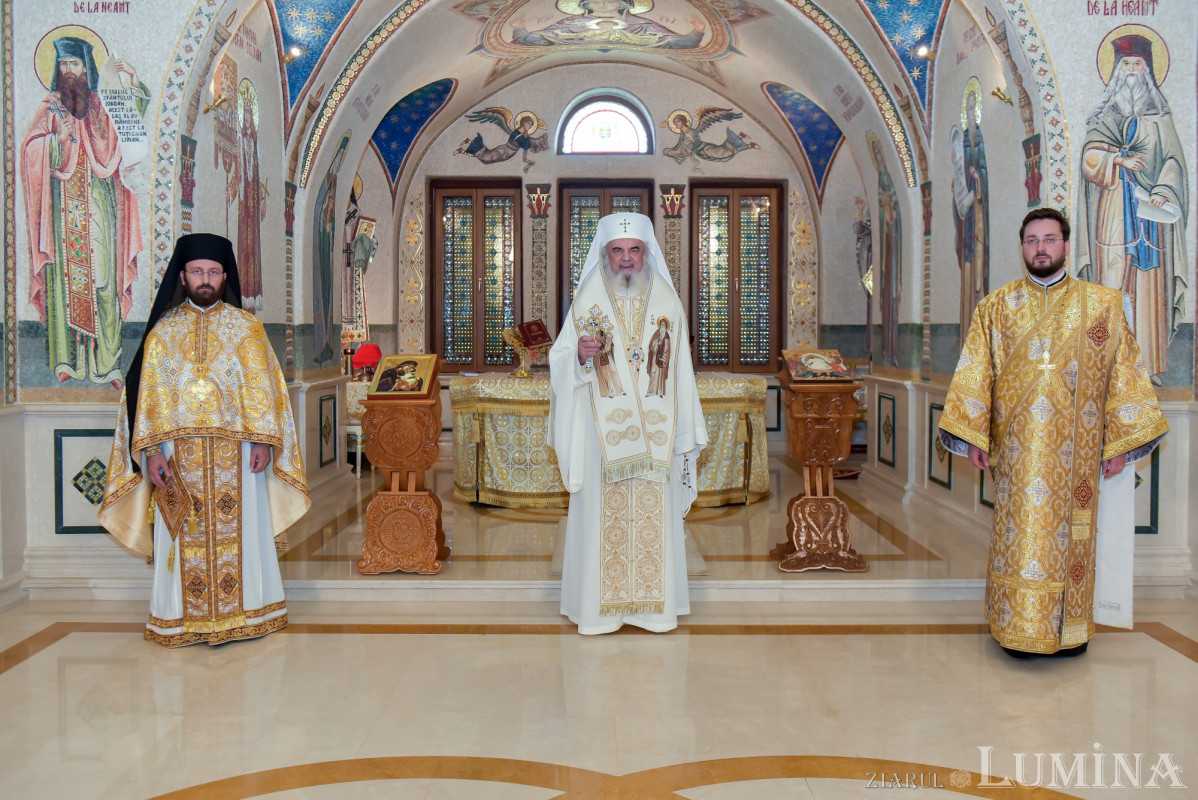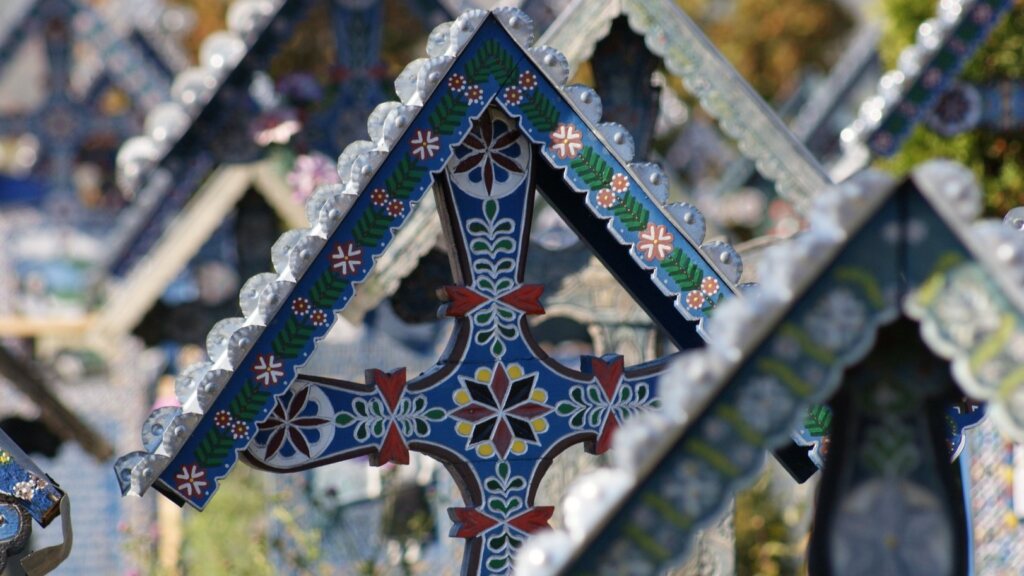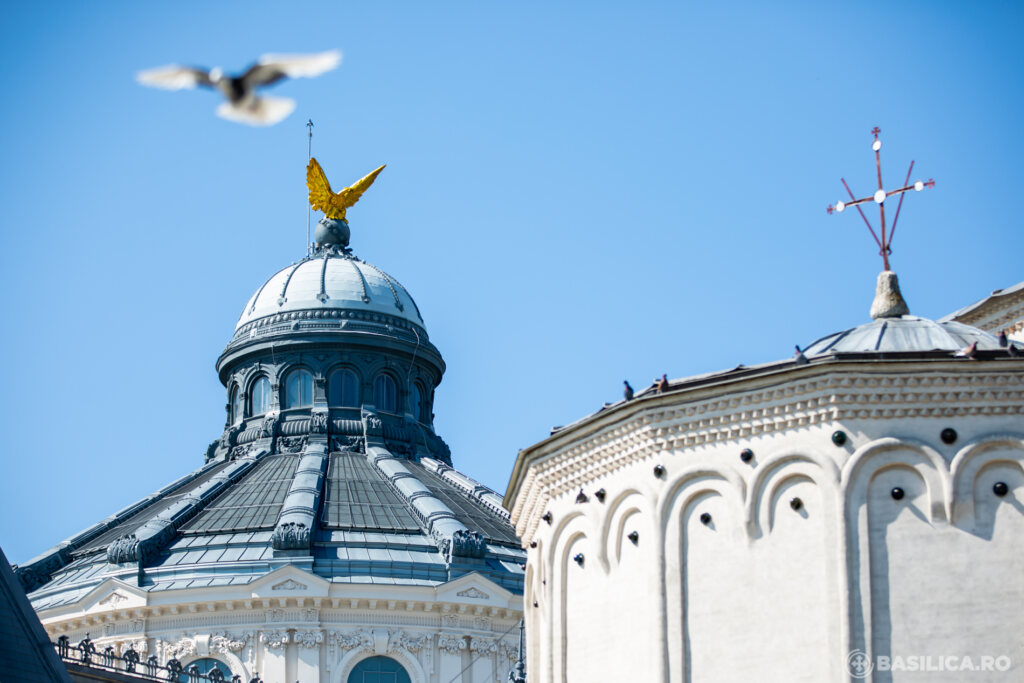One hundred and fifty-two Romanian saints are interceding for us in heaven, before God. The Romanian Orthodox Church has canonized these Saints during a period of seventy years. On the second Sunday after Pentecost (Synaxis of All Romanian Saints), His Beatitude Patriarch Daniel explained what the canonization process entails.
“Most of the saints we know were first venerated by the people who felt the work of God’s grace, and the Church confirmed this holiness that God gave to the saints and that the people felt spiritually.”
“So, the Church does not grant holiness, but holiness comes from God through the Church, and also through the many labours of the saints. The Church ascertains and proclaims holiness, that is, in theological language, the Church is the one that canonizes saints,” the Patriarch said on Sunday, during his homily delivered for the patronal feast of the Romanian Saints’ Hall of the Patriarchal Residence.
What does “canonize” mean?
Patriarch Daniel explained that in Greek, the word canon means measure. “So, when the Church canonized some people, it meant that she considered them a measure or model of Christian living,” His Beatitude pointed out.
“Canonization means that a person had a right faith and a right lifestyle and was considered a model of holy life that others can follow.”
“So, canonization means that the Church is convinced that a person has had the right faith and the right life and has been pleasing to God and has enlightened through their life those around them. In Greek, this act is not called canonization, but the proclamation of holiness.”
Principally, said the Patriarch of Romania, the Church ascertains the holiness of some people and confesses it, makes it known publicly.
“In the Romanian Orthodox Church, canonization is an act of decision of the Holy Synod. The proclamation of canonization or the solemn public announcement of this canonization is made in a liturgical setting, during or at the end of the Divine Liturgy. This proclamation means that the act of canonization is brought to the notice of the clergy and the faithful through a Toms of canonization of the Holy Synod.”
84 canonizations
His Beatitude Patriarch Daniel highlighted that from 1950 to 2020, the Romanian Orthodox Church “had the special blessing from God to be able to canonize and proclaim the canonization of several saints.”
“During this time, 84 canonizations took place, and the sanctity of 152 saints was proclaimed. So, we have 152 Romanian saints in the calendar of our Church. Every month 1-2 or more Romanian saints are commemorated.”
The Romanian saints are included in two broad categories: those of the 3rd-6th centuries, called Proto-Romanians, and those of the 9th-20th centuries. The saints of antiquity from the 3rd-6th centuries are 76 in number, while from the 9th century to the 20th century, we also have 76 saints, His Beatitude noted.
“We must remember, however, that most of the Proto-Romanian and Romanian saints are holy martyrs. Eighty-four of the saints are martyrs, including the 26 Romanian martyrs from Gothia, celebrated on March 26. Also, of the 152 saints, the second most numerous category is that of the venerable saints; we have 38 venerable saints. Then, of course, we have other categories, namely 25 holy hierarchs.”
Known and unknown Saints
His Beatitude explained that this Sunday, instituted by the Holy Synod in 1992, “we commemorate in full communion all known and unknown Romanian saints, those listed in the calendar or synaxarium and those still uncanonized or unknown to people, but known by God.”
“There are many saints known only to God and whom He reveals when He wills and how He wills. It has been seen that in the history of the Universal Orthodox Church some saints were proclaimed, as such, a few years after their passing to eternal life, and others were discovered later and entered the calendar 500 years after their repose. It is a great mystery how God reveals the holiness of the people well-pleasing to Him who have fulfilled the will of God in their lives.”
Who are the saints unknown to people?
“There are the saints who showed the right faith, the right life and especially, these saints are the ones who made the Gospel of Christ fruitful in the life of the Romanian people (…) We also have a lot of venerable people who lived in hermitages, in monasteries hidden in the mountains, in caves, in places where they fasted and prayed a lot. We have holy hierarchs, priests and deacons who confessed Christ; we have holy clergy who have strengthened the people in the faith, holy voivodes who have defended the faith before the migrating peoples, built holy places; we have a lot of soldiers with righteous faith and pure life who sacrificed themselves to defend the homeland and the Christian faith in these lands,” His Beatitude noted July 4.
“We have a lot of mothers and fathers who raised children in the faith and educated them to keep the commandment of love for God and their neighbour; a lot of merciful people who built churches helped the poor, developed social work; a multitude of right-believing teachers who enlightened the people through a chosen Christian education. All these categories of hardworking, faithful and generous people are remembered today on the Sunday of the Romanian Saints.”
The Hall of the Romanian Saints is located at the entrance to the Patriarchal Residence. It was consolidated and restored in 2015-2016. The old painting was replaced due to its irreparable degradation, with a new iconography in the mosaic technique depicting Romanian Saints canonized in the last decades. It was consecrated on May 21, 2016.
Photography courtesy of Lumina Newspaper
Follow us on Twitter: @BasilicaNews






